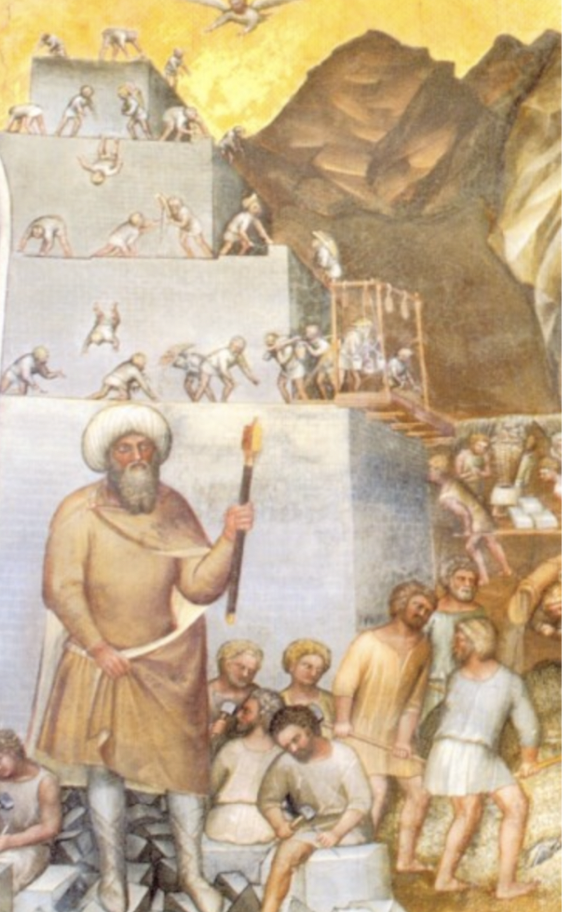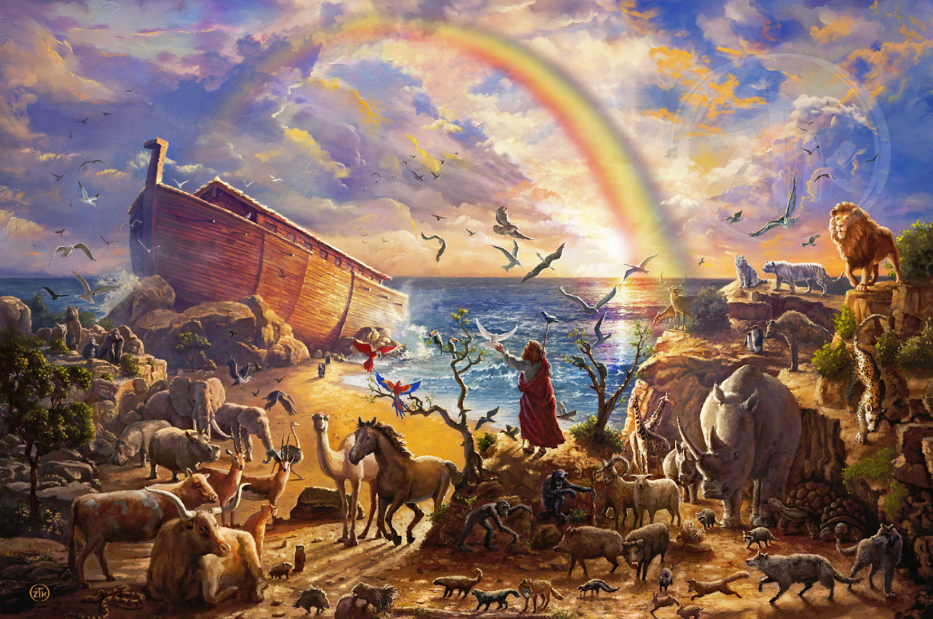1. Parsha Summary – Parshat Noach
(Genesis 6:9 - Genesis 11:32 link to Sefaria here)
Humanity’s Demise: When humanity became so corrupt and God wanted to start over, he chose Noah to build an ark and save some humans and animals to eventually restart humanity.
The Destruction: G-d then sends a flood, submerging the earth. Though it rained for 40 days and 40 nights, it took significantly longer for the water for subside. Noach is traumatized and feels fear about leaving the ark. Eventually he does after the dove does not return to the ark.
The Vineyard: In processing his trauma, Noach plants a vineyard – but only as a means to an end: to forget his sorrow through alcohol. While drunk, his son, according to Rashi, catreates him in order to prevent the world from being split up between more sons (primogenitor).
Migdal Bavel: more on this below.
Genealogy: The parsha ends with a genealogy from Noach through Avrham Avinu. Specifically, the very last thing we’re told is that Avram married his niece Sarai after her father died. This marriage was like an ancient form of adoption: processing the grief of his brother’s loss through caring for his niece.
2. Story context – Noah’s Ark
(Genesis 6:1- 8:22, link to Sefaria here)
Section 1 – Breishit 6:9-22 G-d instructs Noah to build the ark
Section 2 – Breishit 7:1-11 Noah brings onboard all the animal in the world
Section 3 – Breishit 7:12-24 Noah’s experience on the ark
Section 4 – Breishit 8:1-22 Noah finds land to leave
3.Paintings
4. Discussion Questions
The text leaves these points ambiguous; in making their art, the the artist takes their liberty in imagining the answers to these questions:
1. What: What did the tower look like? What was its architecture?
2. Where: Where were they building the tower?
3. Leader: Was there a leader motivating this building? Notice how one of the paintings shows a leader while the other was not.
4. Mission Accomplished: Did they finish building the tower before God punished them?
5. Why: what was their sin? G-d punished them – but what was wrong with this anyway?
4. Discussion Questions
The text leaves these points ambiguous; in making their art, the the artist takes their liberty in imagining the answers to these questions:
1. Structural Ark: How do you show all of the animals in the Ark? What did the Ark look like? How big is it?
2. Story Arc: What point of the story is being described in either picture?
3. Noah: Where does Noah fit in to the art piece’s narrative?
(1) Tower of Babel, Pieter Bruegel the Elder
(2) The Animals Entering Noah’s Ark, Jacopo Bassano
(1) Noah’s Ark, Thomas Kinkade
(2) Tower of Babel, Giusto de' Menabuoi
Parshat Noach פרשת נח
Piece Description, “Tower of Babel”
The story of the Tower of Babel in its essence is about language, power, and history. This piece focuses on these three elements, showing the development of human language and how modern technology has created a seemingly new Tower of Babel through the iphone.
1. Parsha Summary – Parshat Noach
(Genesis 6:9 - Genesis 11:32 link to Sefaria here)
Humanity’s Demise: When humanity became so corrupt and God wanted to start over, he chose Noah to build an ark and save some humans and animals to eventually restart humanity.
The Destruction: God then sends a flood, submerging the earth. Though it rained for 40 days and 40 nights, it took significantly longer for the water for subside. Noach is traumatized and feels fear about leaving the ark. Eventually he does after the dove does not return to the ark.
The Vineyard: In processing his trauma, Noach plants a vineyard – but only as a means to an end: to forget his sorrow through alcohol. While drunk, his son, according to Rashi, catreates him in order to prevent the world from being split up between more sons (primogenitor).
Migdal Bavel: more on this below.
Genealogy: The parsha ends with a genealogy from Noach through Avrham Avinu. Specifically, the very last thing we’re told is that Avram married his niece Sarai after her father died. This marriage was like an ancient form of adoption: processing the grief of his brother’s loss through caring for his niece.
2. Story context – The Tower of Babel
(Genesis 11:1-9, link to Sefaria here)
Section 1 – Breishit 9:1-2 humanity’s shared language
Section 2 – Breishit 9:3-4 humanity wants to build a city and tower
Section 3 – Breishit 9:5-7 G-d disapproves
Section 4 – Breishit 9:8-9 G-d’s punishment
3.Paintings
AlHaTorah interpretation, link here
THE FIRST SOURCE SHEET THAT THEY STUDIED TOGETHER
Student: Sofia Isaias-Day and Mentor: Yona Verwer
THE SECOND SOURCE SHEET THAT THEY STUDIED TOGETHER
Learn more about Sofia Isaias-Day here
Learn more about Yona Verwer here





